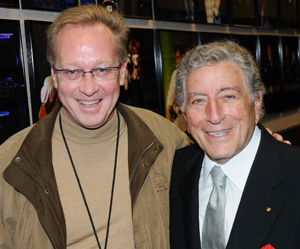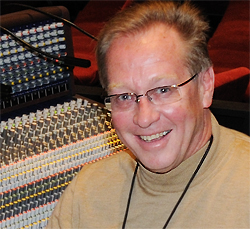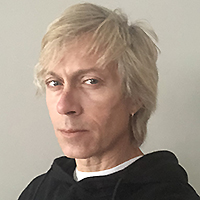Tom Young, mix engineer for Tony Bennett, is a busy man to say the least. In addition to 100-150 live shows he’ll do with Bennett this year, he runs a small audio design company with his wife, and is a partner in ACIR Professional, a New Jersey-based, full-service production and backline company, “That’s become another full-time endeavor, basically,” he says.
It’s a work ethic that comes naturally to Young, and part of the unique musical environment he feels blessed to have been able to spend the last 30 years working in. “I’ve been around some of the best music ever written, the songs, but also the interpretations and arrangements,” he states straightforwardly.
Young also recognizes that he is, in turn, an interpreter of those songs, but the highest praise paid him, he says, isn’t how well the world at large thinks he does that, but rather, the recognition from artists like Bennett, and before that, the late Frank Sinatra, as well as their bands. “The best compliment is they consider me part of the band. You get done a show and almost feel as much a part of that applause as them. You’re part of something really special.”
Originally a guitar player, Young got into the business of sound reinforcement, as many musicians do. He started young, while playing with friends from the Warminster, PA, neighborhood he grew up in. It was a natural progression – when the band bought its first desk in the late ’60s he gravitated to setting it up and roughing in the mix, even after hiring a dedicated engineer.
Listening and playing were always twin passions, says the 53-year-old. “My parents listened to music around the house a lot,” including a fair bit of the music of the two iconic artists he would later come to know and work with, Sinatra and Bennett. But it was rock ‘n’ roll that first caught his ear. The Beatles performance on Ed Sullivan was an early inspiration – a family event, he recalls.
He continued to play throughout college as a business major at Penn State. “I never really embraced school,” he laughs. As his future employer would later say, however, “It is the music business – two words,” Young says, quoting Bennett. “I do fall back on things I did learn, but at the time, I didn’t say anything that was going to make sense. All I wanted was to be involved in music, either as a player, or behind the scenes.”
After Penn State, he got his wish, landing a gig at the Resorts International Casino in Atlantic City, where, in 1978, he first heard Sinatra, before working his way across town to the Golden Nugget. “It was a good training ground,” he says. At the time, most acts were traveling with their core rhythm section and no engineer and Young mixed them all.
“A lot of Vegas acts; Dean Martin, Sammy Davis, Anthony Newley and Sarah Vaughn were coming in there; Peggy Lee, Buddy Rich. I could go on and on.” Great experiences, he adds, but the body of his work was to be with Sinatra and Bennett.

Initially, jazz wasn’t something he gravitated toward, as it wasn’t the music he was playing. Though he’d grown up on rock ‘n’ roll, that first Sinatra show left an indelible impression. “I just remember hearing that band coming off that stage – 40 pieces and him singing – thinking, I would love to sink my teeth into this.” And he did, from 1984 until Sinatra’s retirement.
…
Getting the gig was a case of being in the right place at the right time, Young explains. “I knew his production manager. They were making a change and asked me to do it.”
It was at a show featuring both artists that he first met Bennett, and two months after Sinatra retired, Young got the call to be his FOH engineer. “Both of these gigs, I’ve been blessed. These people really value what you do.” Fourteen years on he still feels that way, partly owing to a passion for his work, but also because of the caliber of the artists.
“I probably learned as many life lessons as I have musically. These are people of great character,” he says. The kind of artists that almost don’t exist in our culture anymore, he adds. They are uncompromising about their talent and the end product, and have taught him “that you have to deliver, that you never take anything for granted. You never forget where you came from. They approach each day trying to do it a little bit better.”















